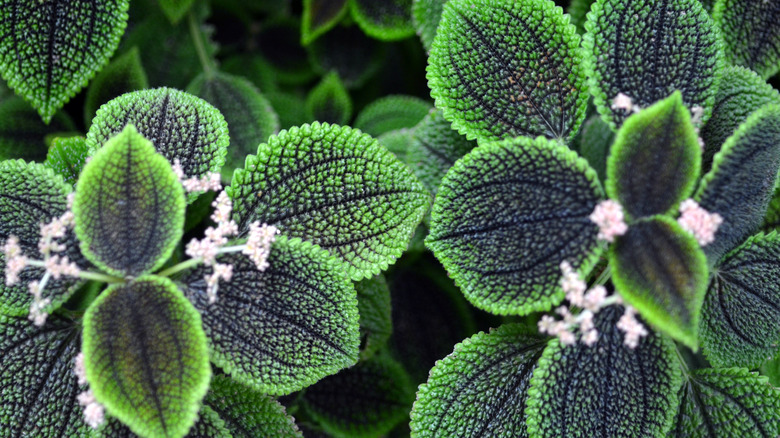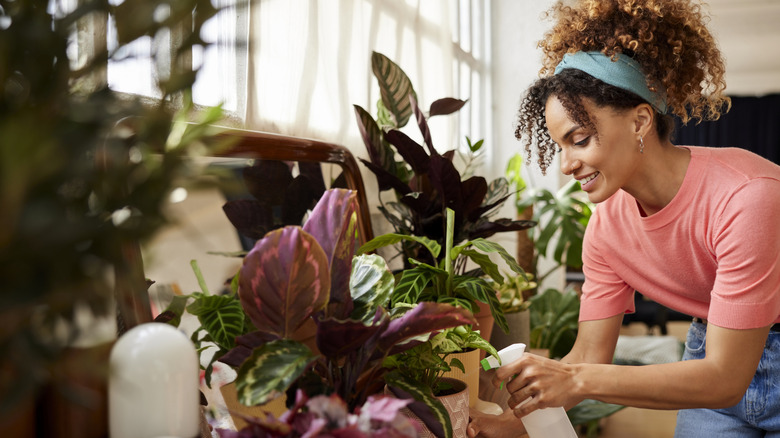How To Keep A Friendship Plant Thriving Indoors
The friendship plant, or Pilea involucrata, is aptly named for its generous spirit. It is easily propagated and is one of many plants that can grow roots in water. This means that stem cuttings grow quickly into new plants and can be shared among friends. Bear in mind that we're not referring to the Pilea peperomioides, which also goes by the same common name. This friendship plant has foliage that is distinctly crinkled, velvety, and variegated, adding visual and textural appeal to any collection of houseplants. In some conditions, the plant will showcase tiny clusters of pinkish-white blooms, although rarely indoors.
Just like friendships need to be nurtured, this plant requires specific growing conditions for it to thrive indoors. It is native to Central and South America, where the climate is often hot and humid. In our homes, this translates to the need for warmth, moisture, and bright indirect light. Too much light could turn the foliage pale. It stays quite compact, maxing out at a foot tall and wide, and tends to be grown in small pots or in trailing baskets. The plant's need for high humidity also makes it an ideal option for terrariums. A plant with these characteristics favors soil that is well-draining, while also being rich in organic matter, like peat moss or sphagnum moss. This common additive in soil serves to retain water, encourage aeration, and is lightweight, ensuring that the potting soil doesn't get too dense.
Common problems of the friendship plant
Although the friendship plant favors humid conditions, this does not equate to keeping the soil wet. Doing so could lead to root rot — a common problem that occurs when the soil isn't given the chance to dry out. The plant's roots become mushy and brown, with outward symptoms like yellowing or wilted leaves, or stunted growth. How can you tell if your plant needs water? The simplest way is to insert your finger into the soil, and water the plant only when the top inch is dry. When the plant is actively growing during the spring and summer, you will need to water more than when the plant is dormant. For spaces that aren't humid enough, create more moisture by placing the pot on a shallow tray of wet pebbles.
In addition, keep an eye out for symptoms of common pests like mealybugs and spider mites. Mealybugs look like soft white bundles that often congregate where the leaves meet the stems, or on lower parts of leaves. The most obvious signs of their presence are honeydew — a clear, glossy excretion — and dark sooty mold. Spider mites are harder to spot because they are so tiny. You'll likely see the results of their presence before you even see them. The plant's leaves may curl, or you'll spot webbing, which typically have the actual mites running along them. If you see these pests, use an alcohol-dipped cotton swab to remove them, and then apply neem oil or insecticidal soap onto the plant. As much as possible, isolate the infested plant until you're certain that the pests have been eradicated.

